-
 Bitcoin
Bitcoin $106,782.3966
-0.72% -
 Ethereum
Ethereum $2,406.7764
-1.16% -
 Tether USDt
Tether USDt $1.0005
0.02% -
 XRP
XRP $2.0918
-1.53% -
 BNB
BNB $644.5785
-0.17% -
 Solana
Solana $141.0925
-0.69% -
 USDC
USDC $1.0000
0.02% -
 TRON
TRON $0.2721
0.18% -
 Dogecoin
Dogecoin $0.1585
-1.26% -
 Cardano
Cardano $0.5497
-1.14% -
 Hyperliquid
Hyperliquid $35.8493
-1.58% -
 Bitcoin Cash
Bitcoin Cash $502.3089
2.20% -
 Sui
Sui $2.7092
3.87% -
 Chainlink
Chainlink $12.8551
-1.85% -
 UNUS SED LEO
UNUS SED LEO $9.0548
0.53% -
 Stellar
Stellar $0.2344
-0.85% -
 Avalanche
Avalanche $17.2676
-0.23% -
 Toncoin
Toncoin $2.8282
0.56% -
 Shiba Inu
Shiba Inu $0.0...01113
-1.14% -
 Litecoin
Litecoin $83.9593
-0.93% -
 Hedera
Hedera $0.1447
0.82% -
 Monero
Monero $306.9022
-2.07% -
 Bitget Token
Bitget Token $4.6358
3.42% -
 Dai
Dai $0.9999
0.01% -
 Ethena USDe
Ethena USDe $1.0001
0.02% -
 Polkadot
Polkadot $3.3211
0.06% -
 Uniswap
Uniswap $6.8775
0.75% -
 Pi
Pi $0.5664
-0.27% -
 Aave
Aave $256.0055
1.28% -
 Pepe
Pepe $0.0...09013
-3.24%
What is the format of an ETH wallet address? Key points to identify authenticity
An ETH wallet address is a 42-character string starting with "0x", case-sensitive, and uses a checksum for security; always verify addresses to ensure secure transactions.
May 13, 2025 at 03:49 am
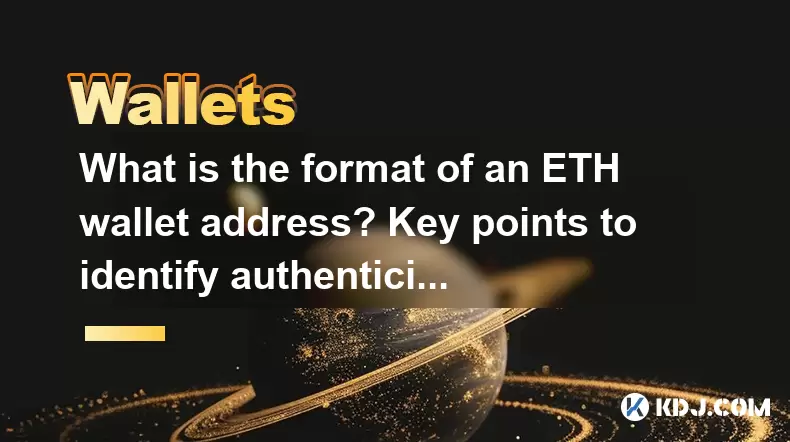
The format of an Ethereum (ETH) wallet address is a crucial aspect of understanding and interacting with the Ethereum blockchain. An ETH wallet address serves as a unique identifier for sending and receiving Ethereum and other tokens on the Ethereum network. Understanding the format and key points to identify authenticity is essential for ensuring secure transactions and protecting your assets.
Basic Structure of an ETH Wallet Address
An ETH wallet address is a string of alphanumeric characters that typically starts with "0x". This prefix indicates that the address is in hexadecimal format. The full address consists of 40 characters following the "0x" prefix, making the total length of an ETH address 42 characters. The format of an ETH wallet address is 0x followed by 40 hexadecimal characters.
Case Sensitivity and Checksum
ETH wallet addresses are case-sensitive, meaning that the uppercase and lowercase letters within the address matter. To enhance security and reduce the risk of errors, Ethereum introduced a checksum mechanism. A checksummed address uses a combination of uppercase and lowercase letters to encode a checksum. This checksum helps to verify the integrity of the address. If you enter an address with incorrect capitalization, most modern wallets and interfaces will detect the error and prevent the transaction from proceeding.
Identifying Authenticity of an ETH Wallet Address
To ensure the authenticity of an ETH wallet address, several key points should be considered:
- Length and Format: The address should be exactly 42 characters long, starting with "0x" and followed by 40 hexadecimal characters. Any deviation from this format indicates an invalid address.
- Checksum: If the address is checksummed, verify that the capitalization matches the checksum. Most modern wallets and blockchain explorers will display checksummed addresses.
- Source Verification: Always receive addresses directly from trusted sources. Be cautious of addresses shared via unsecured channels like email or social media, as they can be easily manipulated.
- Blockchain Explorer: Use a reputable blockchain explorer like Etherscan to verify the address. Enter the address into the explorer to check its transaction history and confirm its existence on the Ethereum blockchain.
Common Mistakes and How to Avoid Them
Several common mistakes can lead to sending ETH to incorrect addresses. Here are some tips to avoid these errors:
- Double-Check the Address: Always double-check the address before sending any funds. A single incorrect character can result in the loss of your ETH.
- Use Copy and Paste: To minimize the risk of typos, use the copy and paste function when entering addresses. Most wallets and exchanges provide a "Copy Address" button for this purpose.
- QR Codes: Many wallets support QR codes for address sharing. Scanning a QR code can be a more reliable method than manually entering an address.
- Test Transactions: If you are unsure about an address, consider sending a small test transaction first to ensure the address is correct and functional.
Tools and Resources for Address Verification
Several tools and resources are available to help verify the authenticity of ETH wallet addresses:
- Etherscan: A popular blockchain explorer that allows you to check the validity and transaction history of any ETH address.
- MyEtherWallet (MEW): A user-friendly wallet interface that includes tools for address verification and transaction management.
- MetaMask: A browser extension wallet that provides address validation and security features.
- Address Checksum Tools: Online tools that can verify whether an address is correctly checksummed.
Practical Steps to Verify an ETH Wallet Address
To verify an ETH wallet address, follow these practical steps:
- Copy the Address: Obtain the ETH address you want to verify from a trusted source.
- Use a Blockchain Explorer: Open a reputable blockchain explorer like Etherscan and paste the address into the search bar.
- Check the Address Details: The explorer will display the address details, including its transaction history and balance. Ensure the address matches the one you copied.
- Verify the Checksum: If the address is checksummed, confirm that the capitalization is correct. Most explorers will display checksummed addresses with mixed case.
- Test Transaction (Optional): If you are still unsure, consider sending a small test transaction to the address to confirm its functionality.
Frequently Asked Questions
Q: Can an ETH wallet address be reused?
A: Yes, an ETH wallet address can be reused. There is no limit to the number of times you can send or receive ETH to the same address. However, for enhanced privacy, it is recommended to use a new address for each transaction.
Q: What happens if I send ETH to an incorrect address?
A: If you send ETH to an incorrect address, the funds are typically irretrievable. It is crucial to double-check the address before sending any funds. If you realize the mistake immediately, you might be able to contact the recipient to request a refund, but this is not guaranteed.
Q: Are there any fees associated with generating an ETH wallet address?
A: Generating an ETH wallet address itself does not incur any fees. However, if you are using a service that charges for wallet creation or management, you may incur fees for those services. Always check the fee structure of the platform you are using.
Q: How can I protect my ETH wallet address from being compromised?
A: To protect your ETH wallet address, use strong, unique passwords for your wallet, enable two-factor authentication (2FA) where available, and keep your private keys offline in a secure location. Avoid sharing your address on unsecured platforms and regularly monitor your address for any unauthorized transactions.
Disclaimer:info@kdj.com
The information provided is not trading advice. kdj.com does not assume any responsibility for any investments made based on the information provided in this article. Cryptocurrencies are highly volatile and it is highly recommended that you invest with caution after thorough research!
If you believe that the content used on this website infringes your copyright, please contact us immediately (info@kdj.com) and we will delete it promptly.
- Smart Investors Navigate the AI Token Frenzy: Bitcoin Switch and Beyond
- 2025-06-28 12:30:12
- Crypto in 2025: How Web3 AI is Poised to Dominate
- 2025-06-28 12:30:12
- Crypto 2025: Spotting the Top Coins with Real Utility
- 2025-06-28 12:42:12
- Pepe Price's Wild Ride: Cryptocurrency Milestone or Just Another Meme?
- 2025-06-28 12:42:13
- BDAG Airdrop Heats Up as ADA Dips and AVAX Eyes Gains: What's the Buzz?
- 2025-06-28 10:30:12
- Crypto, Bitcoin, Buy Now: Navigating the Bullish Breakout
- 2025-06-28 10:30:12
Related knowledge

How to stake cryptocurrencies on Coinbase? Benefits and risks
Jun 27,2025 at 06:36pm
Understanding Cryptocurrency Staking on CoinbaseStaking cryptocurrencies involves locking up digital assets to support the operations of a blockchain network, typically in return for rewards. Coinbase, one of the most popular cryptocurrency exchanges globally, offers staking services for several proof-of-stake (PoS) coins. Users can stake their holdings...
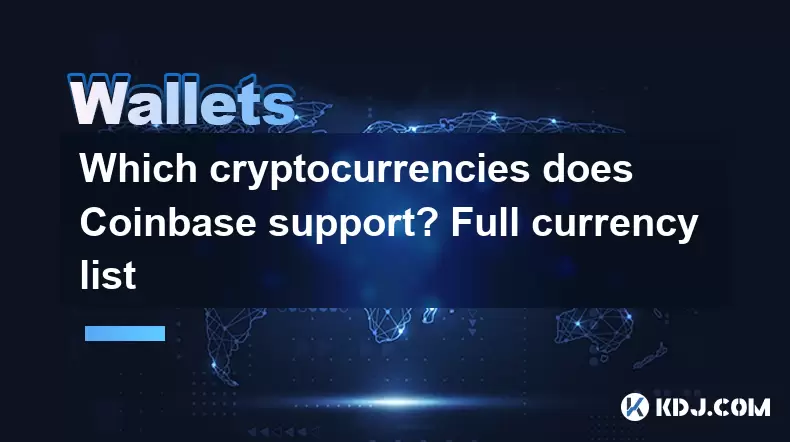
Which cryptocurrencies does Coinbase support? Full currency list
Jun 28,2025 at 08:36am
Overview of Cryptocurrencies Supported by CoinbaseCoinbase is one of the most popular and trusted cryptocurrency exchanges globally. It provides users with a platform to buy, sell, trade, and store various digital assets. As of the latest updates, Coinbase supports over 200 cryptocurrencies, including major ones like Bitcoin (BTC), Ethereum (ETH), and L...
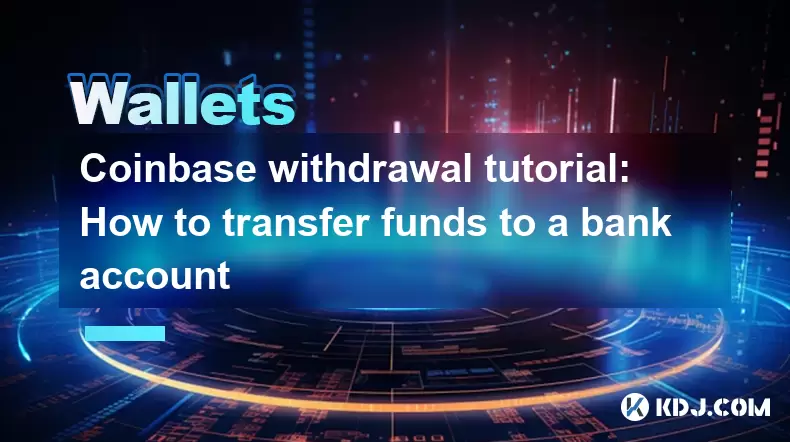
Coinbase withdrawal tutorial: How to transfer funds to a bank account
Jun 28,2025 at 02:35am
Understanding Coinbase WithdrawalsCoinbase is one of the most widely used cryptocurrency platforms, allowing users to buy, sell, and store digital assets. Once you've successfully traded or held your crypto on Coinbase, the next logical step may be to withdraw funds to a bank account. This process involves converting your cryptocurrency into fiat curren...
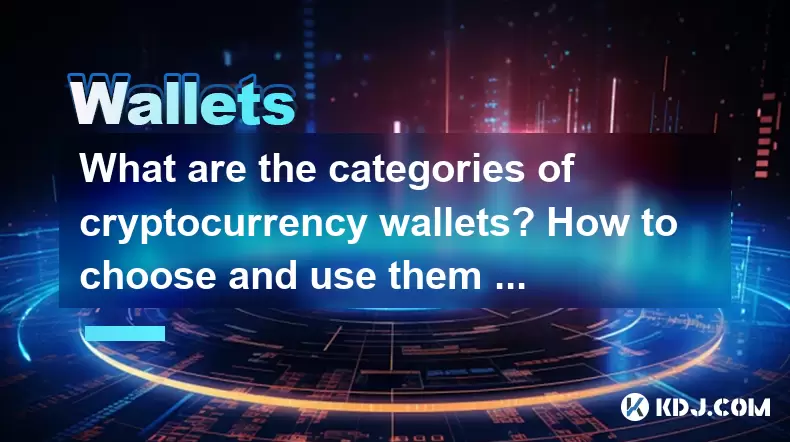
What are the categories of cryptocurrency wallets? How to choose and use them safely?
Jun 21,2025 at 10:42pm
Understanding Cryptocurrency WalletsCryptocurrency wallets are essential tools for anyone involved in the digital asset ecosystem. They allow users to store, send, and receive cryptocurrencies securely. Unlike traditional wallets that hold physical money, crypto wallets manage cryptographic keys—private and public—which interact with blockchain networks...
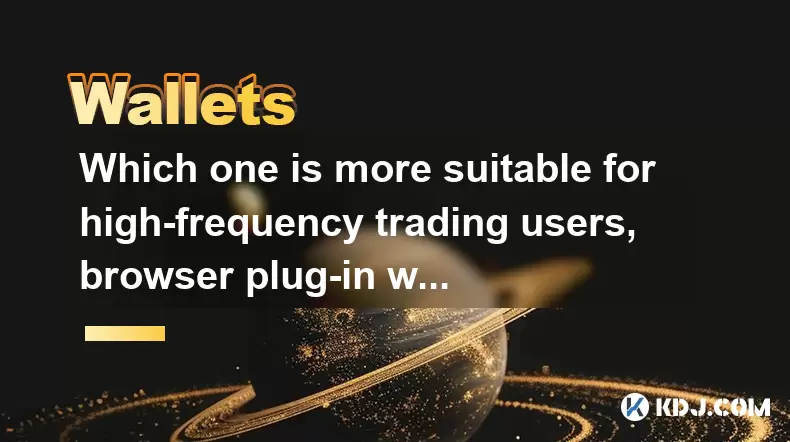
Which one is more suitable for high-frequency trading users, browser plug-in wallets or independent application wallets?
Jun 23,2025 at 08:22am
Understanding the Role of Wallets in High-Frequency TradingFor high-frequency trading (HFT) users in the cryptocurrency market, wallet selection is critical due to the need for speed, security, and seamless integration with trading platforms. HFT involves executing a large number of trades within seconds or even milliseconds, which demands a wallet that...

What are the differences between the operating mechanisms of on-chain wallets and off-chain wallets? Is there a big difference in transaction fees?
Jun 25,2025 at 08:49am
Understanding On-Chain WalletsOn-chain wallets are digital wallets that directly interact with the blockchain network. These wallets store users' private keys, which are essential for signing and authorizing transactions on the blockchain. When using an on-chain wallet, every transaction must be recorded and verified by the decentralized nodes in the ne...

How to stake cryptocurrencies on Coinbase? Benefits and risks
Jun 27,2025 at 06:36pm
Understanding Cryptocurrency Staking on CoinbaseStaking cryptocurrencies involves locking up digital assets to support the operations of a blockchain network, typically in return for rewards. Coinbase, one of the most popular cryptocurrency exchanges globally, offers staking services for several proof-of-stake (PoS) coins. Users can stake their holdings...

Which cryptocurrencies does Coinbase support? Full currency list
Jun 28,2025 at 08:36am
Overview of Cryptocurrencies Supported by CoinbaseCoinbase is one of the most popular and trusted cryptocurrency exchanges globally. It provides users with a platform to buy, sell, trade, and store various digital assets. As of the latest updates, Coinbase supports over 200 cryptocurrencies, including major ones like Bitcoin (BTC), Ethereum (ETH), and L...

Coinbase withdrawal tutorial: How to transfer funds to a bank account
Jun 28,2025 at 02:35am
Understanding Coinbase WithdrawalsCoinbase is one of the most widely used cryptocurrency platforms, allowing users to buy, sell, and store digital assets. Once you've successfully traded or held your crypto on Coinbase, the next logical step may be to withdraw funds to a bank account. This process involves converting your cryptocurrency into fiat curren...

What are the categories of cryptocurrency wallets? How to choose and use them safely?
Jun 21,2025 at 10:42pm
Understanding Cryptocurrency WalletsCryptocurrency wallets are essential tools for anyone involved in the digital asset ecosystem. They allow users to store, send, and receive cryptocurrencies securely. Unlike traditional wallets that hold physical money, crypto wallets manage cryptographic keys—private and public—which interact with blockchain networks...

Which one is more suitable for high-frequency trading users, browser plug-in wallets or independent application wallets?
Jun 23,2025 at 08:22am
Understanding the Role of Wallets in High-Frequency TradingFor high-frequency trading (HFT) users in the cryptocurrency market, wallet selection is critical due to the need for speed, security, and seamless integration with trading platforms. HFT involves executing a large number of trades within seconds or even milliseconds, which demands a wallet that...

What are the differences between the operating mechanisms of on-chain wallets and off-chain wallets? Is there a big difference in transaction fees?
Jun 25,2025 at 08:49am
Understanding On-Chain WalletsOn-chain wallets are digital wallets that directly interact with the blockchain network. These wallets store users' private keys, which are essential for signing and authorizing transactions on the blockchain. When using an on-chain wallet, every transaction must be recorded and verified by the decentralized nodes in the ne...
See all articles























































































